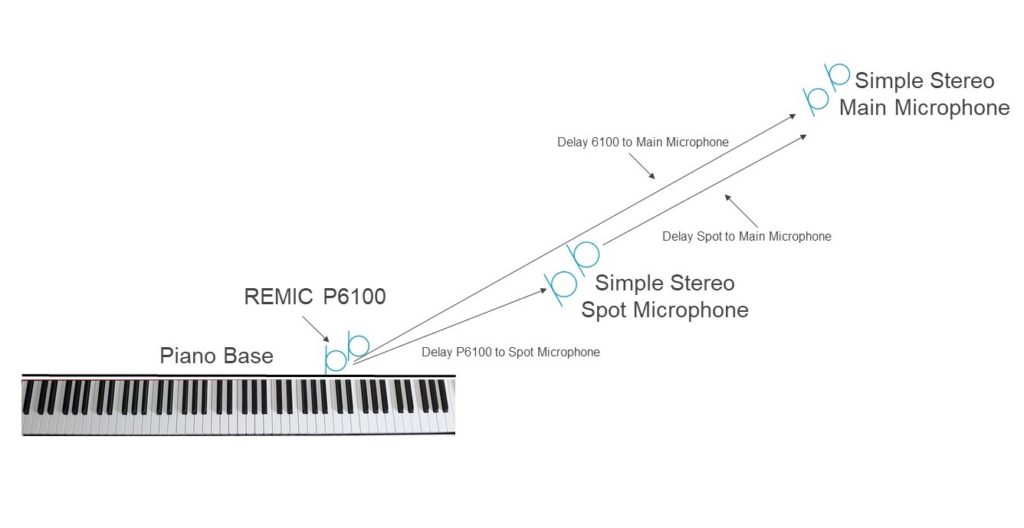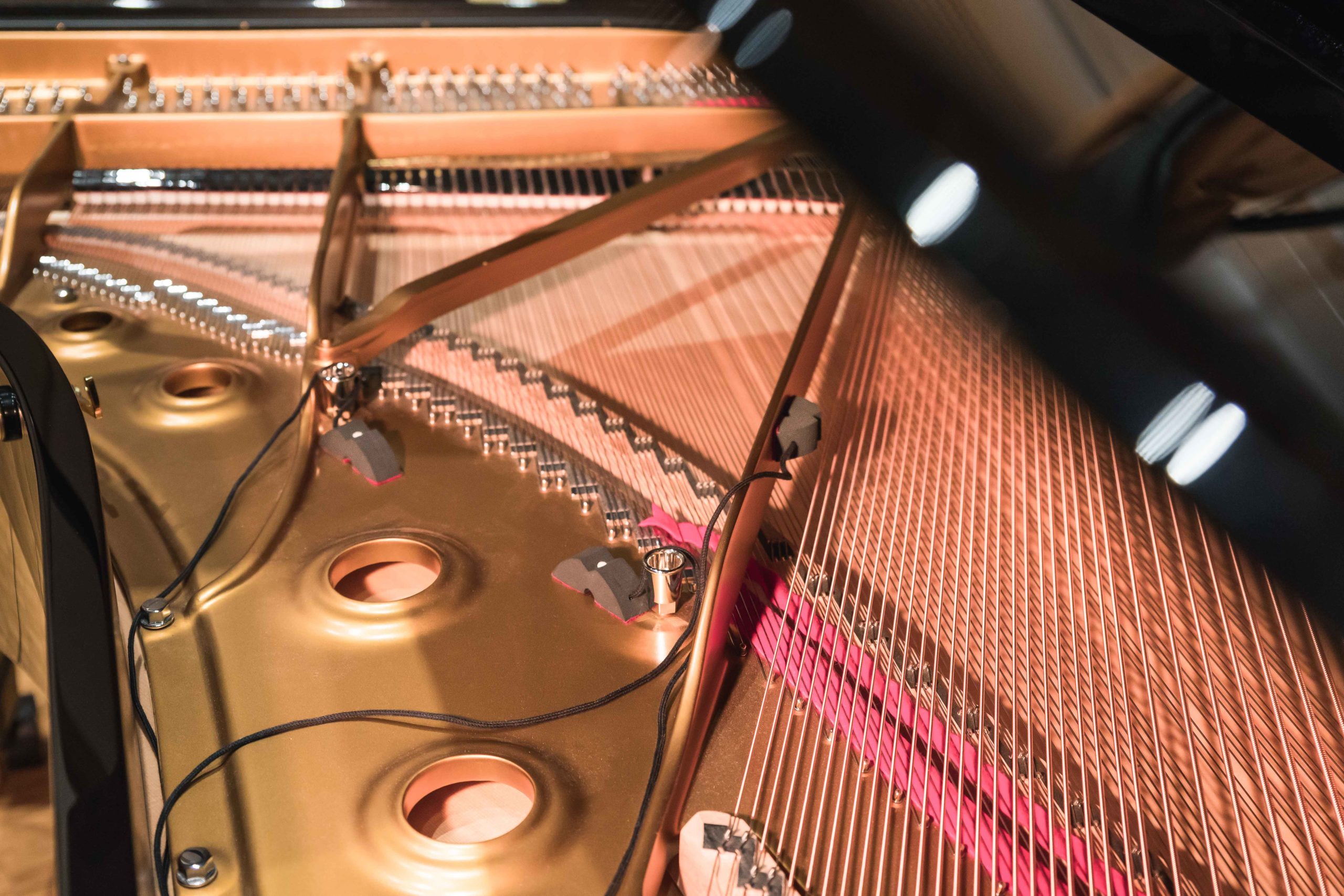How to work with Spot Delay when miking a Grand Piano
– A special note when using the REMIC P6100 Piano Microphones
Article by Gregor Zielinsky. Read more on Gregor’s profile page.
“By moving around the delay times, you can change the sound of the piano pretty drastically. So the final decision, whether and how to use the delay is always depending on the situation and on personal preferences.”
– Gregor Zielinsky
Working with spot delay is a very well-known technique since the 1980s. It is based on the fact, that when using spot microphones plus a main microphone, the sound result might be disappointing. The reason for this is very easy to understand. The sound of the instrument(s) will first arrive at the spot microphone, and then a little bit later to the main microphone.
This will cause delay and phase effects. These effects again will cause phase distortion and combfilter effects. This will cause an effect, that the sound spectrum of the instrument or voice might be altered in a drastical even negative way, so that the result might be insuffucient or unpleasing.
I can very well remember the sentence “Questa non è la mia voce” (This is not my voice), mentioned by several very well known classical singers, before we had the chance to use spot delay.
Since the end of the 1980s, when digital desks arrived, there was the possibilty to use spot delay without large technical efforts and external delay units. Of course, when recording an entire orchestra, it will take some time to check the correct distance of all spot microphones, and transfer it to the delay adjustment in the mixer.
Furthermore, the more microphones that are being used, there is no guarantee, that the measured distance transferred to delay time will really lead to a perfect result. The closer you come to the correct delay spot, the more combfilter effect might happen. So always use your ears for the perfect adjustment.
Illustration below: Piano Setup Delay between REMIC P6100, „normal“ Spot Microphone and Main Microphone

Above: If you are using the spot delay based on the main microphone, the delay between P6100 and the spot microphone will happen automatically.
REMIC P6100 Piano Microphones combined with Spot Microphones
Lets have a look, what happens if one uses a REMIC P6100 piano microphone kit (DUAL or TRIPLE) plus another common spot microphone for the piano. First, why should one do this?
A very realistic use case is a piano concerto, when the piano plays together with an orchestra. The bigger the orchestra is, like for Ravel or Brahms repertoire, the more problems one might have, keeping the piano always present enough. The orchestra will play into the piano spot mic. This will cause big crosstalk problems, plus the discussed combfilter effects.
This problem can be avoided by using a REMIC P6100 piano microphone kit, or combining a common spot microphone, with a REMIC P6100.
As the REMIC P6100 kit is placed directly on the piano, and as the spot mic will have a distance of around 1-2 meters from the piano, mixing both together will definitely cause a lot of unpleasing results. Mainly the combfilter effect as described above.
Therefore, using spot delay compensation is absolutely crucial in this combination. One might measure the distance of the spot mike to the piano, and then do the calculation e.g. with the help of this website: https://mehlau.net/audio/calculator/
Also, a basic rule is that a distance of 1 meter, or 3 feet, is equivalent to 3 ms. Or even easier, 1 feet equals 1 ms. As described above, you will need to use your ears to find out the perfect delay time. It might even be neccesary, to go into the sample level, to find the correct delay time.
Even if you do not want to use spot delay for the whole orchestra, using the technique for the REMIC P6100 piano microphones in combination with a common spot mike is defintely a very usefull thing. Using the REMIC P6100 piano microphone kit in a situation like this will help a lot, keeping the piano present, without running into balance problems with the orchestra.
Sound Samples with and without Spot Delay
- Beethoven with Delay (Mix of around 50% between REMIC P6100 and Stereo Spot Microphone):
- Beethoven no Delay (Mix of around 50% between REMIC P6100 and Stereo Spot Microphone):
- Beethoven REMIC P6100 TRIPLE Kit only:
- Beethoven Spot Microphone only:
Comments to the Sound Samples
The stereo spot microphone is around 1.2 meters away from the piano. Height is around 2 meters, as a small stereo AB base of around 30 cm.
The two REMIC P6100 microphone units in the main position are delayed by 4 ms.
The third REMIC P6100 microphone unit, which is closer to the bass strings is delayed by 5 ms.
The position of the REMIC P6100 TRIPLE kit is what we call the “warm/soft” position as illustrated below:

With or Without Delay
The difference in sound with vs. without delay is obvious. The delayed version gives a clearer midrange and bass range, while the non delayed version becomes a little unpleasing in the middle C range and muddy in the bass.
However, some people might prefer the non delayed version, as it seems to have more bass. This is actually strongly depending on taste as well as on the use case.
By moving around the delay times, you can change the sound of the piano pretty drastically. So the final decision, whether and how to use the delay is always depending on the situation and on personal preferences.
